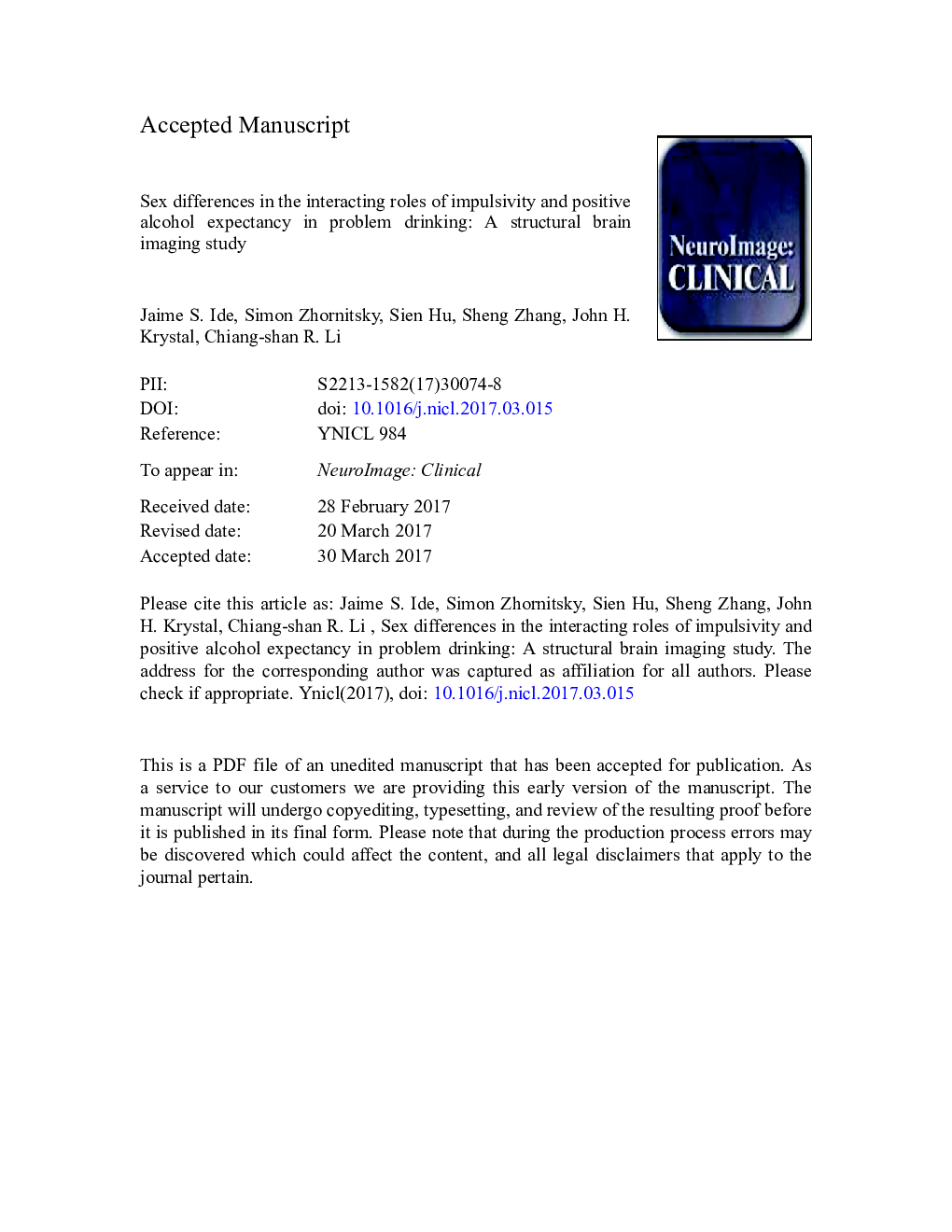| Article ID | Journal | Published Year | Pages | File Type |
|---|---|---|---|---|
| 8688818 | NeuroImage: Clinical | 2017 | 35 Pages |
Abstract
Alcohol expectancy and impulsivity are implicated in alcohol misuse. However, how these two risk factors interact to determine problem drinking and whether men and women differ in these risk processes remain unclear. In 158 social drinkers (86 women) assessed for Alcohol Use Disorder Identification Test (AUDIT), positive alcohol expectancy, and Barratt impulsivity, we examined sex differences in these risk processes. Further, with structural brain imaging, we examined the neural bases underlying the relationship between these risk factors and problem drinking. The results of general linear modeling showed that alcohol expectancy best predicted problem drinking in women, whereas in men as well as in the combined group alcohol expectancy and impulsivity interacted to best predict problem drinking. Alcohol expectancy was associated with decreased gray matter volume (GMV) of the right posterior insula in women and the interaction of alcohol expectancy and impulsivity was associated with decreased GMV of the left thalamus in women and men combined and in men alone, albeit less significantly. These risk factors mediated the correlation between GMV and problem drinking. Conversely, models where GMV resulted from problem drinking were not supported. These new findings reveal distinct psychological factors that dispose men and women to problem drinking. Although mediation analyses did not determine a causal link, GMV reduction in the insula and thalamus may represent neural phenotype of these risk processes rather than the consequence of alcohol consumption in non-dependent social drinkers. The results add to the alcohol imaging literature which has largely focused on dependent individuals and help elucidate alterations in brain structures that may contribute to the transition from social to habitual drinking.
Related Topics
Life Sciences
Neuroscience
Biological Psychiatry
Authors
Jaime S. Ide, Simon Zhornitsky, Sien Hu, Sheng Zhang, John H. Krystal, Chiang-shan R. Li,
